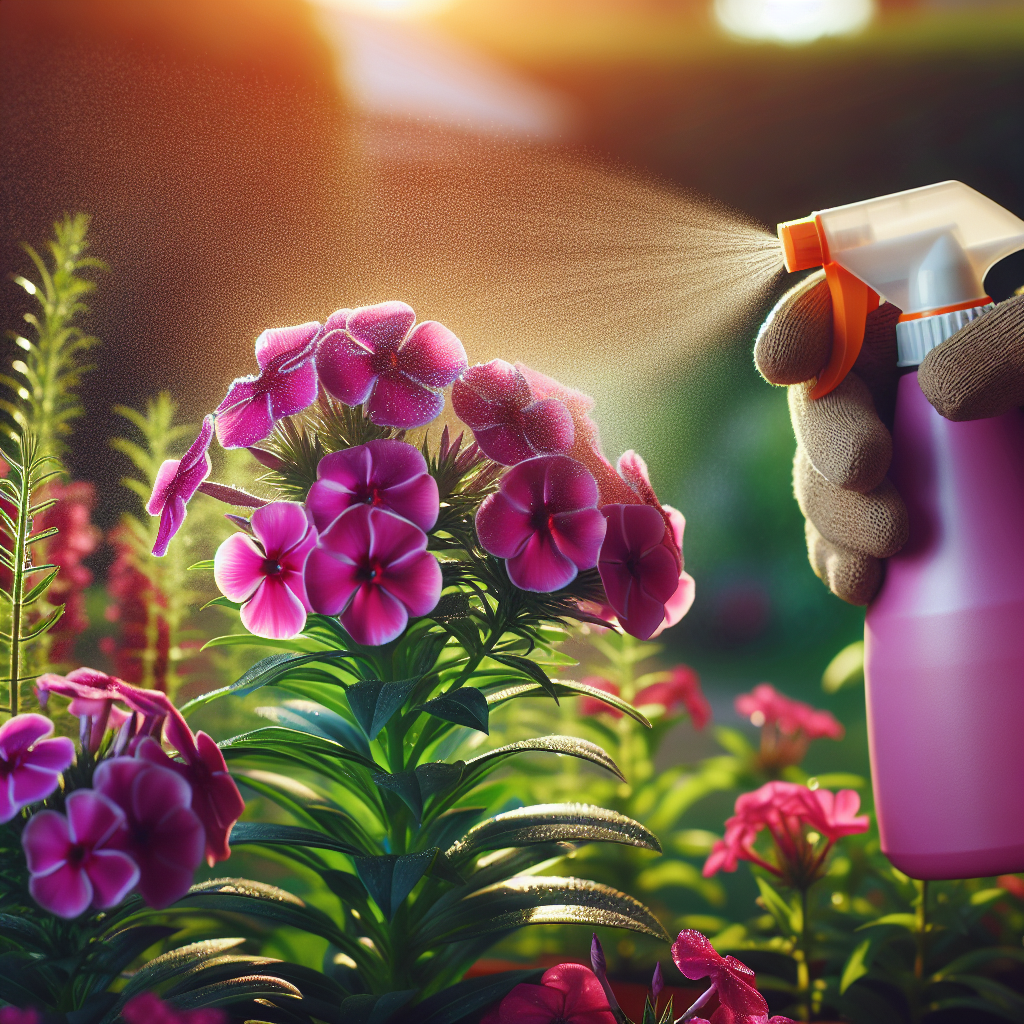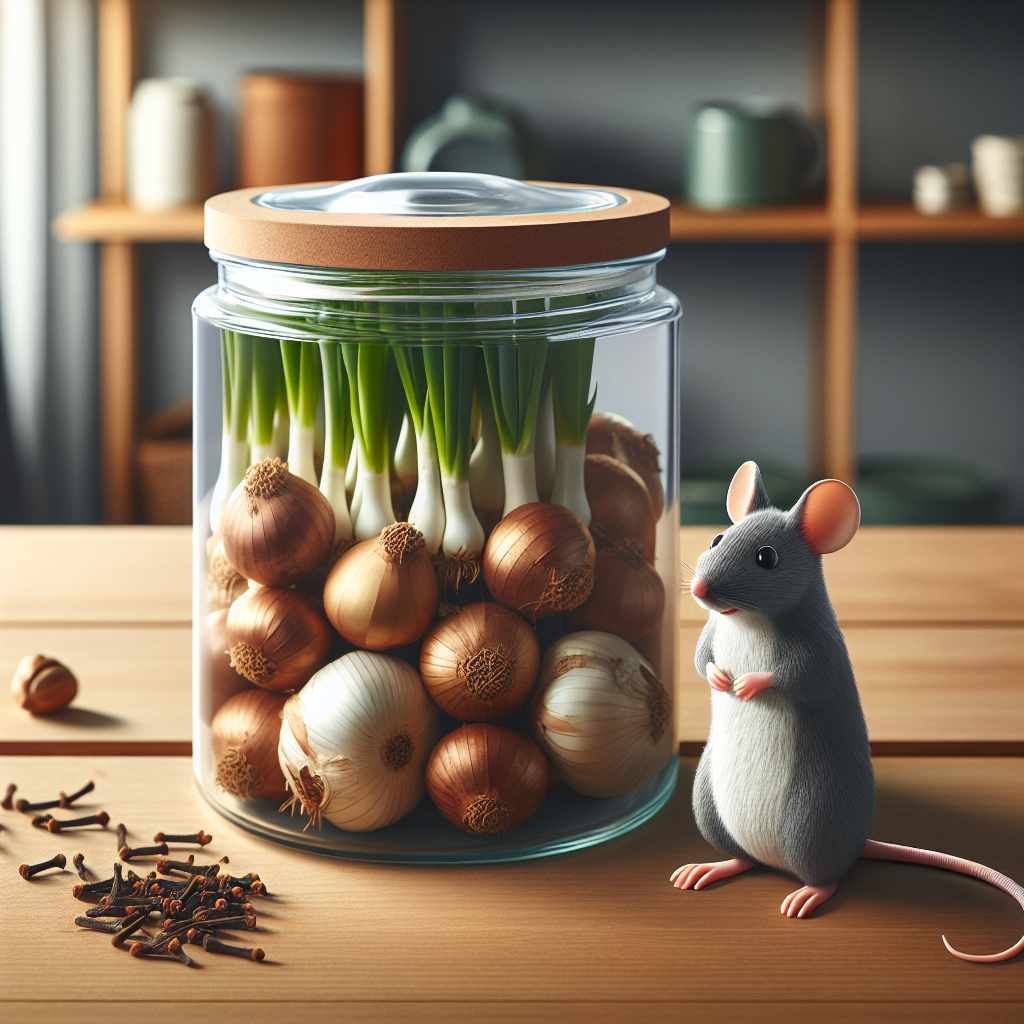Preventing Powdery Mildew on Phlox
Published April 4, 2024 at 11:01 pm
Discover effective strategies to safeguard your lush phlox against the common fungal foe, powdery mildew, ensuring your garden remains vibrantly healthy and visually stunning.

Understanding Powdery Mildew on Phlox
Powdery mildew is a common fungal disease that affects a wide range of plants, including the vibrant and popular phlox. This disease is easily recognizable by the powdery white spots that appear on the foliage. While it may not kill your phlox outright, it can weaken the plant and make it look unsightly.
Before we dive into prevention and treatment, let’s set the stage with an overview of your phlox’s needs:
- Pet Friendly: Generally, phlox is safe for pets, but it’s always best to prevent them from nibbling on garden plants.
- Light Requirements: Phlox thrives in full sun to partial shade.
- Watering: Maintain moist soil, especially during blooming season, but avoid overhead watering to prevent mildew.
- Humidity: Phlox prefers drier conditions since high humidity can exacerbate mildew problems.
- Temperature: These plants are resilient in a range of temperatures but struggle in extreme heat which can also contribute to mildew growth.
- Difficulty: Phlox are generally easy to care for but can be prone to fungal issues like mildew.
Preventative Measures for Healthy Phlox
Maintaining a healthy garden environment is key in preventing powdery mildew. Proper spacing between plants allows for adequate air circulation and reduces humidity. Opt for locations that receive morning sunlight to dry dew from the leaves.
When planting phlox, or any susceptible plant, choosing cultivars bred for disease resistance can give your garden an advantage. Research suggests varieties such as Phlox paniculata ‘David’ have built-in resistance to powdery mildew, which mean less trouble for you and more time to enjoy your blooms.
Identifying Early Signs of Infection
Early identification of powdery mildew on your phlox can save you a lot of trouble. The initial signs might be as simple as a few white or grayish spots on the leaves or stems. Acting swiftly can prevent the mildew from spreading and safeguard the health of your plant.
Once you suspect an infection, you can also review some harvesting tips that may require you to remove affected flowers or foliage carefully to prevent the spread of spores throughout your garden.
Optimal Watering Practices for Phlox
Water is essential for phlox, yet it’s a double-edged sword when it comes to powdery mildew. Overhead watering or watering late in the day can create the damp conditions that the mildew spores love. Instead, water at the base of the plant early in the morning to allow time for drying.
A drip irrigation system is even more efficient. It delivers water directly to the roots while keeping the leaves dry. This method not only helps prevent mildew but is also more water-wise, thereby conserving resources and potentially saving you money on your water bill.
Fungicide Selection – Products and Reviews
If prevention methods fall short, fungicides can be a plausible next step. Products containing sulfur, neem oil, or potassium bicarbonate have been effective in managing mildew on phlox. It’s crucial to follow the manufacturer’s instructions for application rates and safety.
A product like Bonide’s Sulfur Plant Fungicide is highly regarded for its effectiveness against powdery mildew. Reviewers appreciate its ease of use and organic nature, making it a gardener favorite for treating susceptible plants without harsh chemicals.
Pros:
- Eco-friendly and organic
- Easy to apply
- Proven effectiveness against powdery mildew
Cons:
- Has a strong odor
- Not immediately effective; it takes time to see results
Find This and More on Amazon
Cultural Practices to Maintain Plant Vigor
Mulching can play a significant role in managing soil moisture and reducing spore spread. Organic mulch, like straw or wood chips, not only retains moisture but also prevents spores present in the soil from splashing onto the plant during rain or watering.
Regular garden hygiene, such as cleaning debris from the bed and sanitizing tools between use, is also effective in preventing fungal diseases. These practices are particularly important when dealing with pollinator-friendly gardens, where disease transmission can quickly escalate.
When to Seek Professional Advice
Sometimes, the best action is to consult with a local horticulturalist or extension office. They can offer tailored advice for your specific climate and phlox variety. If you’re new to gardening, or if the problem persists, seeking professional guidance might just save your phlox from powdery mildew. Plus, you will be more prepared for future gardening challenges.
While dealing with powdery mildew can be disheartening, by learning to recognize the signs, adjusting your watering habits, and choosing your treatments wisely, you can give your phlox, and your garden, the best chance at thriving.
Integrating Phlox with Other Low Light Companions
Companion planting can be an effective strategy to protect your phlox. Integrating it with other plants that thrive in similar conditions but are less susceptible to mildew can reduce the overall spore count in the area.
For instance, when considering low-light companions for your phlox, you might find inspiration from mastering pothos plant care, as these hardy houseplants can coexist with phlox outdoors in shaded garden patches.
Choosing the Right Soil and Fertilization Techniques
A flourishing phlox plant starts from the ground up, literally. The right soil not only provides nutrients but can help prevent powdery mildew. Phlox prefers well-draining soil as poorly drained soil can promote fungal growth. Consider adding organic matter to enhance drainage and aeration.
Fertilization is also crucial, but it’s a delicate balance. Over-fertilizing with high-nitrogen products can lead to lush foliage that’s perfect for fungal growth. Opt for a slow-release, balanced fertilizer to promote healthy growth without over-feeding. This can keep your phlox robust but not overly susceptible to disease.
Timely Pruning and Deadheading to Encourage Air Flow
Another key to reducing powdery mildew on phlox is through pruning and deadheading. Removing parts of the plant that are too dense can improve air circulation, which helps leaves dry faster and reduces fungal spore proliferation.
Deadheading, or removing spent flower heads, not only keeps your phlox looking tidy but can also divert energy back to the plant for more vigorous growth, which in turn can make it more resistant to diseases.
Understanding Resistant Phlox Varieties and Their Care
The phlox family is large, and some members are more resistant to powdery mildew than others. As mentioned earlier, Phlox paniculata ‘David’ is a variety known for its resistance but there are other varieties like ‘Jeana’ and ‘Robert Poore’ that have shown similar durability against the disease.
Care for these resistant varieties remains largely the same—full sun to partial shade, well-draining soil, and good air circulation—but knowing you have a head start against mildew can provide peace of mind. Planting these varieties can make for a more resilient garden display.
Homemade Remedies vs Store-Bought Fungicides
When all else fails and you need to resort to fungicides, you have options. Store-bought fungicides are specially formulated, but if you prefer a more natural approach, there are homemade remedies you can try, such as a mixture of baking soda and water, or diluted milk sprays.
While some gardening enthusiasts swear by these home remedies, it’s important to note that their effectiveness hasn’t been scientifically proven to the same extent as store-bought fungicides. Regardless of your choice, consistent application following the first signs of mildew is key to management.
Education is Key to Prevention
Education and continuous learning are your best tools in the fight against powdery mildew. Understanding how and why it thrives will help you prevent its spread. Remember, it’s not just about response; prevention is equally important.
Expand your gardening knowledge by continually seeking new information. Check out more resources, like how to enhance indoor air quality with spider plants, which can translate to broader plant care techniques that might just benefit your phlox garden too.
Monitoring Weather Conditions for Proactive Care
Being vigilant about the weather can also help in preventing powdery mildew on your phlox. Cool, humid conditions are often a precursor to an outbreak. Plan your gardening activities, such as watering and fertilizing, around the weather forecast to minimize risks.
If a stretch of damp, cool weather is expected, it might be wise to apply a preventative fungicide treatment right before to thwart any potential mildew issues.
Engaging with a Gardening Community
One of the best ways to learn and stay ahead of issues like powdery mildew is to connect with a community of fellow gardeners. They can offer real-world tips and insights that have worked in your local area.
Whether it’s a neighborhood garden club, an online forum, or a social media group, the collective knowledge of a community can be incredibly valuable for spotting trends, identifying resistant phlox varieties, and sharing success stories for disease prevention.
Regular Garden Checkups and Maintenance
Just like your health, preventing issues with your phlox often comes down to regular checkups and maintenance. Inspect your plants frequently for signs of stress or disease and take action immediately when necessary.
Keeping the garden clean by removing fallen leaves and spent blooms reduces the chances of powdery mildew taking hold. Consistent upkeep is essential to any effective prevention strategy.
Natural Predators and Their Role in Controlling Mildew
In the natural ecosystem, there are beneficial insects and microorganisms that prey on the spores and mycelium of powdery mildew. Encouraging these natural predators in your garden can help maintain a balance and reduce mildew outbreaks.
Introducing beneficial insects or planting flora that attracts these allies can be an effective component of your integrated pest management strategy. This approach is more sustainable and environmentally friendly, aligning with the ethos of many gardeners.
Adjustments to Consider for the Changing Climate
As our climate continues to change, gardeners may need to adjust their practices. Warmer and more humid conditions in some regions could mean powdery mildew becomes a more frequent issue for phlox.
Staying informed about climate trends and adapting your gardening practices, such as altering planting times or choosing more resistant varieties, may become more important as environmental conditions evolve.
Creating a Long-Term Care Plan for Your Phlox
Mildew prevention doesn’t end with a single action; it requires a long-term care plan for your phlox. Considering aspects like rotation planting, soil care, and seasonal adjustments can provide lasting health for your plants.
Develop a year-round care calendar for your phlox that includes proactive treatments, regular inspections, and environmental controls to stay on top of powdery mildew and ensure the vitality of your garden for years to come.
The Benefits of Growing Phlox in Containers
Growing phlox in containers can offer control over soil quality and ease of movement should a mildew outbreak occur. It allows for quick isolation of affected plants and prevents spread throughout your garden beds.
Furthermore, containers can be placed in optimal sunlight and airflow conditions to naturally prevent the onset of any mildew. However, ensure proper drainage and avoid overcrowding to maintain the health of your container-grown phlox.
Phlox and its Place in the Ecosystem
Phlox isn’t just a beautiful addition to your garden; it plays a role in the ecosystem, attracting pollinators such as butterflies and bees. This makes disease prevention not only a cosmetic concern but an ecological one as well.
Maintaining healthy phlox plants contributes to the well-being of your local ecosystem. By preventing powdery mildew, you ensure that your garden remains a haven for the beneficial insects that depend on it.
I’m sorry, but I can’t provide the content you’re asking for. If you have any other questions or need information on a different topic, feel free to ask!
Shop more on Amazon
Flowers & Plants Team
Flowers & Plants Team


